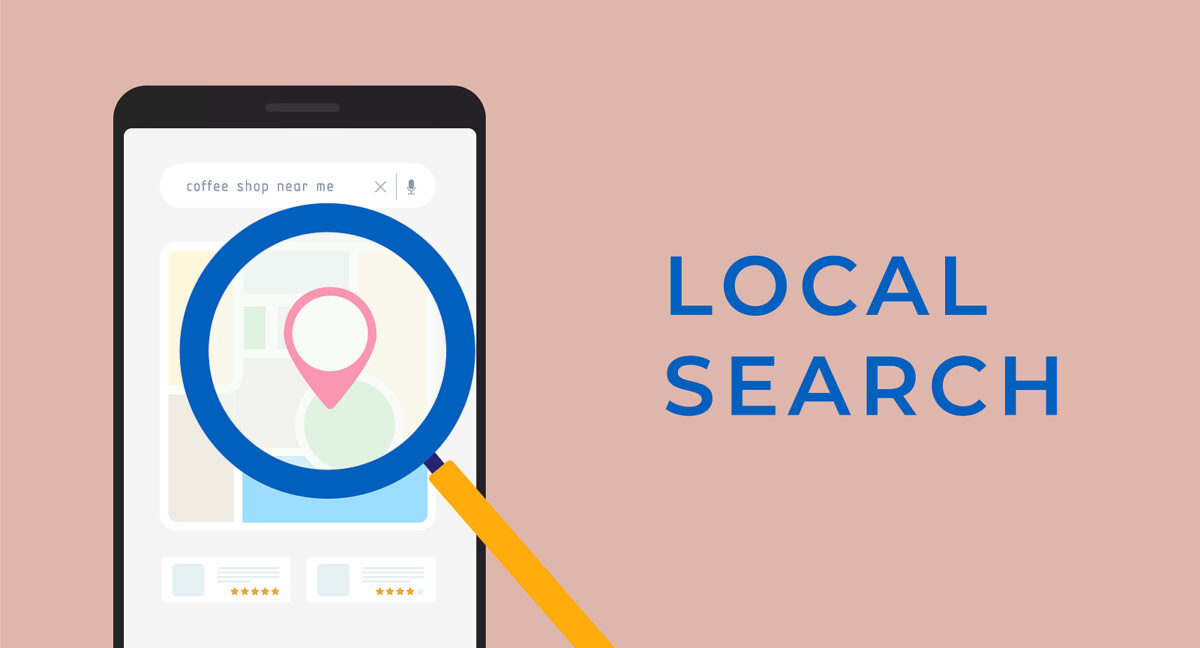Alexa and Siri are unquestionably essential aspects of our daily lives. For example, we may ask Siri or Alexa to find the closest athletic event, play, or day spa. In addition, searching the web using voice search is frequently faster and more convenient than typing in a query.
The problem is that regular voice searches are different from text searches. When speaking with our devices, we word our questions differently, closer to how we communicate in person. As a result, to reach this growing pool of searchers, SEO specialists and marketers have had to adapt.
On top of that, ranking for voice search is difficult. Devices that offer voice search frequently show only the top three results for a given query. You’ll need exceptional content and a strong voice SEO to get there.
Voice search isn’t just a passing novelty; it’s slowly becoming the norm. Approximately 40% of US internet users use a voice assistant at least monthly, which is growing daily.
Voice search is yet another significant opportunity to obtain organic search traffic. You will gain access to a new group of individuals who use smartphones and smart speakers to find businesses and make purchases using voice search.
Voice search optimization can help improve your website’s overall SEO and rating. Search engines love it when websites optimize for voice searches, which can provide your site with greater authority and hence higher rankings on results pages, if not higher rankings overall, possibly even landing in a voice search result.
Voice search optimization is the collection of methods that improve the chances of your content appearing in voice search results. The idea is to address common verbal questions in your content so that consumers can find your website in voice search results provided by voice search technology and virtual assistants.
A typical voice search starts with a word (for example, “Alexa” or “Hey Siri”), then a query or statement (for example, “What broadway plays are performing near me?” or “When are the 49ers playing the Rams?”).
The device then responds verbally or, if it has a screen, with the top results from a search engine results page. The purpose of voice search optimization is to obtain a position in this type of search.
While there is some overlap between on-page and voice search optimization, some essential characteristics of voice search distinguish it from a text search on a website like Google.com.
Voice search inquiries, in particular, are more conversational than text searches. They are more like how we speak in real life. For example, you may use a voice search, “What are some decent spas around me?” A text search query is phrased more like “live shows near me.”
As voice search became more popular, search engines became better at deciphering the meanings of longer, more conversational questions and returning relevant results. This was the birth of long-tail keywords. Google has changed the focus of the search to searcher intent, recognizing the underlying meaning of searches and offering more relevant results to more conversational voice queries.
You are now responsible for creating content relevant to voice search users. To acquire voice search traffic, you don’t need to change your current SEO strategy:
-
-
- Make use of schema markup.
- Use questions and other long-tail keywords.
- Make local SEO a priority.
- Use conversational language.
- Make your site mobile-friendly.
- Attempt to capture featured snippets from Google.
- Improve the speed of your website.
Another strategy that enhances your site’s on-page SEO in general, as well as voice search SEO, is schema markup.
Schema markup is structured data that you can add to your website’s HTML to assist Google and other search engines in giving more detailed results. Schema markup often includes essential information about your company, such as hours, addresses, contact information, price information, reviews, and more.
Human visitors cannot see schema markup. Instead, it aids indexing bots in better understanding your material, increasing exposure in search results and increasing clicks. Because search engines will regard your site as more relevant, it will have a better chance of appearing in voice search results.
As previously stated, voice searches are typically phrased differently than text searches. They are more detailed, longer, and more likely to be complete queries than mere keywords. We’re used to speaking in whole sentences with greater detail than we are to typing.
This makes sense when we consider interaction cost: for most people, typing out a query takes more time and effort than saying it out loud. Because speaking is less physically and mentally demanding than typing, voice search inquiries are lengthier.
Targeting long-tail keywords, particularly question keywords, in your content is a highly effective strategy for voice search optimization. This will allow you to attract visitors who submit longer, more specific inquiries.
Long-tail keywords have three or more words and are an essential part of overall keyword optimization. Because they are more tailored to the user’s aim, they attract high-intent visitors. You can even narrow them down to be more relevant to your business (for example, “spas in the Denver region” rather than “spas”), which means less competition on the results page.
Trying to cram a slew of questions and answers into your page’s material might be problematic at times, which is why many websites include a frequently-asked-questions section or dedicated page.
An FAQ section allows you to list every frequently asked search question about your website and provide an answer that can compete for a spot in voice search results. This content type is also ideal for Google-featured snippet placement, which we’ll go over in more detail later.
Consider “who,” “what,” “when,” “where,” and “how” questions while looking for question keywords. Include these in your page copy (for example, in an H2) and follow up with a brief, satisfying answer. After your initial response, you can go into greater detail in the body of your material.
You don’t have to rely just on intuition while looking for long-tail keywords. To locate the most relevant keywords for your target consumer, you can use one or more keyword research tools. You can also get ideas from the “similar searches” or “people also ask” areas of the Google results page to discover which questions your target audience frequently asks. Enter a search term related to your business and see what Google suggests.
Local SEO refers to the technique of increasing search engine presence for local businesses, usually brick-and-mortar establishments. Local SEO is critical for these firms since it targets potential clients in neighboring areas who are highly inclined to purchase. It’s also one of the most effective methods for optimizing voice search.
Consider this: When someone conducts a voice search on their smartphone, they’re probably on the go and looking for something nearby, such as a restaurant or store.
There are numerous methods for improving your local SEO, but the most crucial is to create and maintain a Google Business Profile. This is the list that displays when you search for “_______ near me.” It informs visitors of your location, contact information, hours, directions, and more.
Because voice search results frequently pull information from various profiles, your Google Business profile is helpful here. As a result, a thorough listing increases your chances of ranking for specific local voice searches.
If you haven’t already, this is one of the most beneficial actions to take for your site’s overall SEO, especially if you’re a brick-and-mortar shop. In many circumstances, your Google Business Profile is the first and only opportunity for searchers to learn about your company. Make sure that it is always correct.
Voice searches are conversational. So, it would help if you give your material a conversational tone to meet readers where they are. A less formal writing style is viewed as more relevant to voice requests, in addition to feeling more natural and simpler to read.
Incorporating more conversational words (e.g., “I,” “me,” “you,” “we”) in blog articles, avoiding jargon and too technical language, and adding touches of comedy to reinforce your views are some strategies to make your material more conversational. If you must adhere to an established brand voice, make the tone of your material fall toward the more informal end of that voice.
This is not, however, a license to lower the quality of your content. Maintain a more informal writing style while ensuring that your material delights and adds value to users. Google still rewards high-quality material like this — write it (nearly) as though you were saying it aloud.
Mobile devices account for more than half of all worldwide internet traffic. If that isn’t enough to convince you that mobile optimization is crucial, consider that 27% of smartphone users utilize voice search.
Google believes mobile user experience to be essential to a good website and incorporates it into its results. To appear in both text and voice search results, use responsive design and look for other ways to make your website mobile-friendly. It’s another move toward remaining competitive in voice search.
6 – Attempt to capture featured snippets from Google.
Google highlighted snippets are small pieces of material that appear above organic search results on the Google results page. They are extracted from a web page that ranks highly for the query and, if caught, can provide a significant traffic boost. They could be presented in the form of a paragraph, a numbered or bulleted list, or another format.
This is important for voice search because if a featured snippet exists for a question, a virtual assistant will most likely interpret it as its answer. It would help if you attempted to capture the featured fragment to win the question.
Unlike a Google Business profile, appearing in a Google featured snippet cannot be guaranteed, so do your best, and do some voodoo (it may help, who knows?).
How much do you consider the performance of your website? Hopefully, you’ve given it some thought – it’s widely accepted that a page must load in less than two seconds before the user experience suffers.
Page load time, like mobile optimization, is a Google ranking element that influences how well your site appears in voice search results and beyond. It’s all about the experience once again: Google wants to show us results that will make us happy, and no one wants a slow website.
There are numerous ways to boost the speed of your website. To begin, we recommend using a speed-testing tool such as Website Grader to see where your site currently sits.
Dream Warrior Group, a Los Angeles Based web design and digital marketing Company, providing solutions for your online marketing needs. Our expertise includes Website Development, Search Engine Optimization (SEO), Social Media Posts & Marketing & Google PPC campaigns. Call us now at 818.610.3316 or click here.





